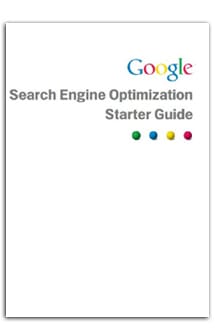According to statistics, 22% of all retail sales will be e-commerce based by 2023.
The takeaway? Now is a prime time to get in on the e-commerce game and market your products online. Although e-commerce was already booming pre-covid, the pandemic has spurred even greater growth in this area.
However, while business is surging online—you won’t be able to enjoy a piece of the pie if you don’t implement an SEO strategy for your online store.
The good news is that we’re here to help with our Shopify SEO checklist. Are you eager to launch your Shopify store, the right way?
If yes, keep reading as we share with you everything you need to have on your SEO checklist when building out your site.
Monitoring Your Metrics
One of the first things you’ll need to do when setting up your Shopify store is to install and set up your analytics tools. The two most recommended tools to start with are Google Analytics and Google Search Console.
Both of these tools will help you evaluate your traffic, visitor behavior, search rankings, and more. These metrics are essential for helping you grow your traffic and sales.
Do Keyword Research
Besides setting up your analytics tools, you must also conduct keyword research. Through keyword research, you can uncover which keywords and search terms you wish to target.
Generally, most site owners try to target keywords with decent monthly search volumes and low keyword difficulty. In non-SEO speak, this means that lots of people are searching for the term, but it isn’t too hard to rank for.
There are many tools you can use to conduct keyword research, including Ahrefs Keywords Explorer, Google Search Console, Google Keyword Planner, and more.
If the idea of keyword research is daunting to you, this is a prime area to outsource. Keyword research is a vital part of e-commerce success. If you don’t feel confident doing it yourself, consider hiring an SEO service to handle this important task.
Create Clean URLs
When creating URLs, make sure they are clean and easy to understand. As Google is now displaying them prominently in search, it’s more important than ever that your URLs are easy to read.
At the same time, URLs also affect SEO. To help your page rank, URLs should include your targeted keyword for the page or product.
One way to keep URLs short and sweet is to remove stop words.
Optimize Your Images for Search
If you’re creating an e-commerce site, chances are you’re gonna be uploading lots of appealing product images.
When you do this, make sure you not uploading them with names like “image 007.” Instead, name each image with the targeted keyword for the page where it will appear.
For instance, if you are uploading an image of a cap and want the associated page to rank for the search term “trucker cap,” this is what you should name the image.
This lets Google know that your image is of something related to the page content. What’s more, naming your image with your targeted keyword also helps the picture to rank in image searches.
Create Compelling Content and Listings
No Shopify SEO checklist would be complete without covering the importance of creating compelling content and listings.
Although you need to conduct thorough keyword research, you also need to make sure that your pages and content are optimized for humans. The more engaging your content is, the longer visitors will stay on your site. This sends a powerful positive signal to Google.
Keep Descriptions Short, Sweet, and Original
When creating your product descriptions, make sure they are original. Do not use the manufacturer descriptions.
There are two reasons for this. Firstly, the chances are that the manufacturer has published their descriptions somewhere online already. If they have, your listing will then display as duplicate content in Google’s eyes.
The other reason to create original product descriptions is they generally convert better. Rather than have a generic description, you can craft your own and cater it to your target audience.
Unique product descriptions tend to outperform manufacturer descriptions and are usually more engaging.
Besides sticking to unique content, when creating descriptions, you should also aim to keep them relatively short. Rambling descriptions that are overly long probably won’t win you any extra conversions. In fact, they could actually drive customers away and dilute the SEO of your listing.
Look at Enabling Reviews
Another important on-page SEO checklist item to consider is enabling reviews on your products.
According to research, 95% of shoppers read online product reviews before making a purchase. Not only do reviews serve shoppers, but they also keep visitors on your site longer and can contribute to your SEO.
Create a Content Marketing Strategy
Whether you are creating a new site or following an SEO audit checklist for an established site, it’s important that you pay attention to your content marketing strategy. Content marketing is a powerful way to attract new customers, grow your brand, and build trust.
Therefore, when implementing a Shopify SEO checklist, make sure that you devote time to mapping out a content strategy. This could include blogging, guest blogging, video content, and content promotion.
Optimize for Speed, Mobile Browsing, and Local SEO
Lastly, make sure that you optimize your online shop for speed, mobile SEO, and local SEO.
Having a slow site is a recipe for chasing customers away, as no one wants to be stuck watching a spinning wheel for more than a few moments. To increase your site speed, make sure you optimize your images, keep your site streamlined and clean, and secure fast hosting.
Besides this, you also want to make sure that your site displays and functions well on mobile. According to statistics, 65% of all e-commerce traffic is from mobile. It is essential that your site can handle mobile traffic without any display, loading, or usability issues.
Besides this, you should also make sure that you optimize for local SEO.
Need More Than a Shopify SEO Checklist?
Optimizing your online store for search is key if you want in on e-commerce success. But what if you need more than a Shopify SEO checklist?
If you feel daunted at the idea of optimizing your site on your own, contact a reputable SEO agency or even a good SEO freelancer to help you out. Finding someone that specializes in Shopify SEO and can get your site ranking fast will go a long way.
Contents



